If you’ve ever scrolled through a perfectly styled home on Instagram and thought, “Yeah, but who can afford that?” — you’re not alone. Truth is, great style doesn’t have to come with a designer price tag.
Some of the most beautiful spaces I’ve seen were pulled together on shoestring budgets — a mix of clever DIYs, thrift store treasures, and small upgrades that somehow make everything look way more high-end than it really is.
The trick isn’t spending more money; it’s spending it smart. It’s about knowing what makes a room feel polished, what draws the eye, and what you can fake with a little creativity.
So if your home’s been feeling a little flat or “unfinished,” here are 10 budget-friendly home decor ideas that look (and feel) expensive — without your wallet ever finding out.
1. Add Statement Lighting (It Changes Everything)
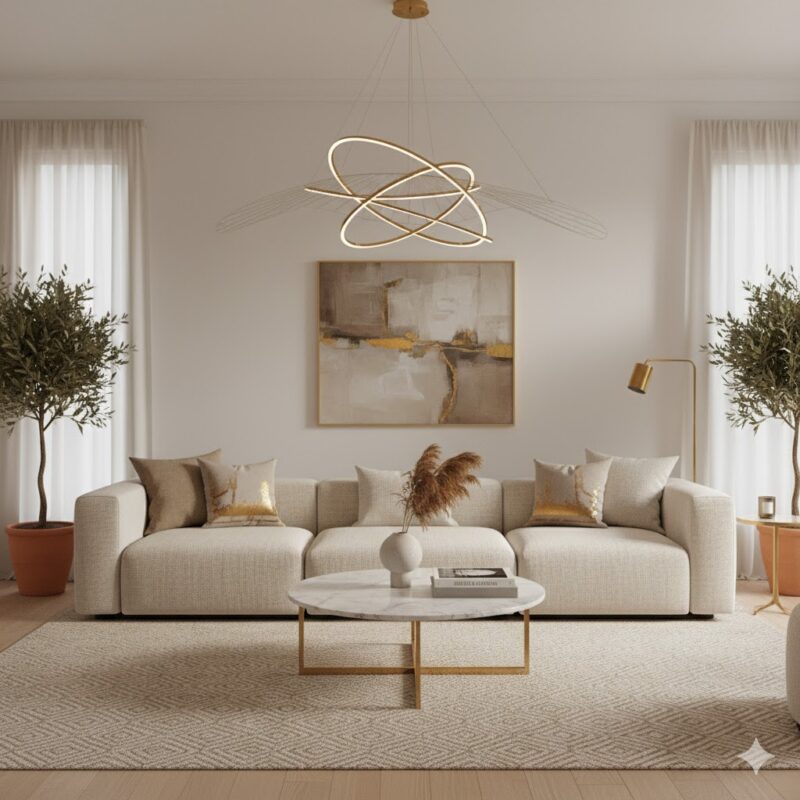
You know how a single piece of jewelry can elevate an outfit? Lighting does that for your home.
Swap out builder-grade fixtures for something with personality — a sleek pendant, a woven rattan shade, or even a sculptural floor lamp. You don’t need designer brands; IKEA, Target, and thrift stores have plenty of affordable options that look like they cost ten times more.
The key is scale. Bigger lights always look more expensive, even if they weren’t. Try hanging a bold pendant low over a dining table or layering table lamps and floor lamps for that soft, layered glow.
And honestly, just swapping to warm-toned bulbs makes a world of difference. Everything feels cozier, softer, more intentional.
2. Upgrade Your Hardware
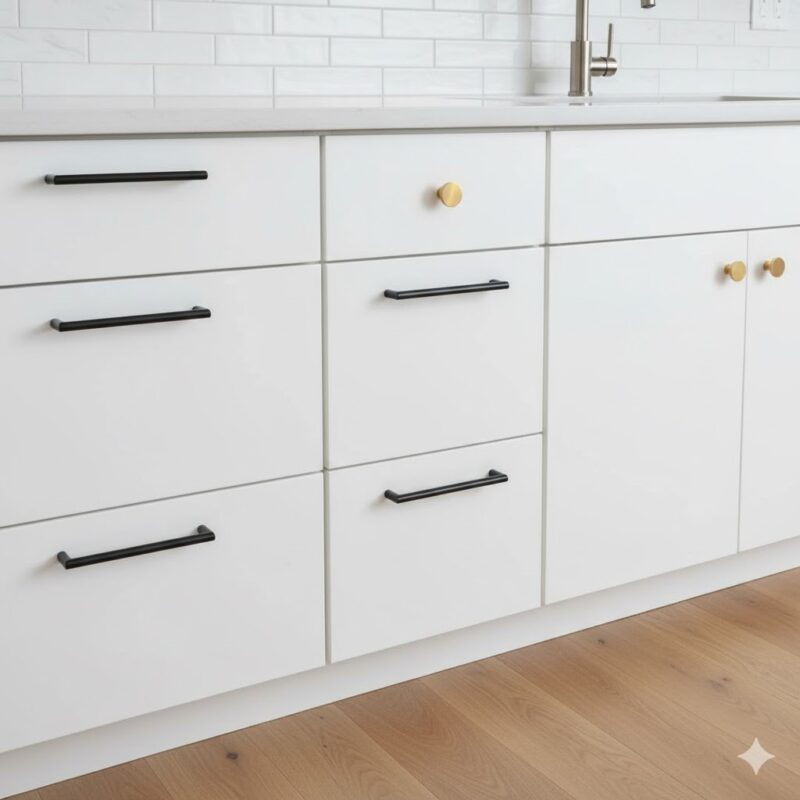
You’d be shocked at how much a few knobs can change a room.
Replacing old cabinet handles, drawer pulls, or door knobs instantly modernizes your space. It’s one of those upgrades that takes an hour but looks like you remodeled the whole room.
Go for brushed gold, matte black, or aged brass — finishes that read as luxe but don’t have to be expensive.
I once changed out the handles on an old dresser for $25 total, and people kept asking where I “bought the new furniture.” (Spoiler: I didn’t. It was the same piece, just dressed up.)
Small details make a big impression — especially when they gleam a little.
3. Paint Makes Magic (and It’s Cheap Therapy)
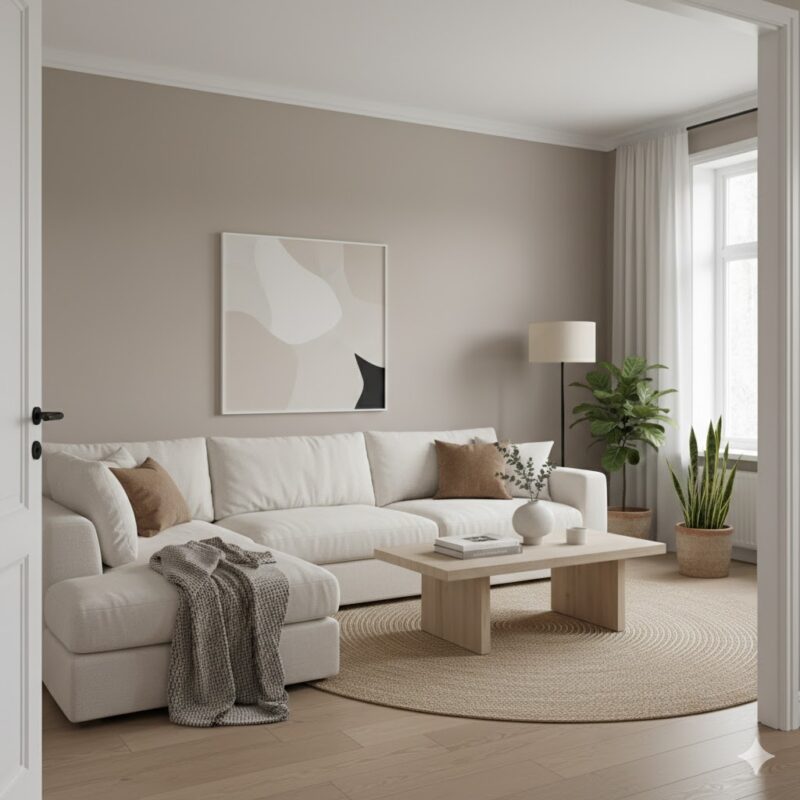
Few things transform a space faster than paint — and it’s hands-down the cheapest big-impact update you can do.
Choose timeless shades that feel sophisticated: warm whites, muted grays, soft sage, or even deep navy if you want drama. A matte or eggshell finish looks richer than glossy, and it hides imperfections better too.
If you’re feeling bold (or just bored), try painting an accent wall, a ceiling, or even your doors.
You’d be surprised how luxurious a painted interior door looks in black or dark green — it’s that subtle “designer” move that costs under $30 and completely changes the mood.
Paint can make your space feel new again — without replacing a single thing.
4. Layer Rugs (Even Over Old Flooring)
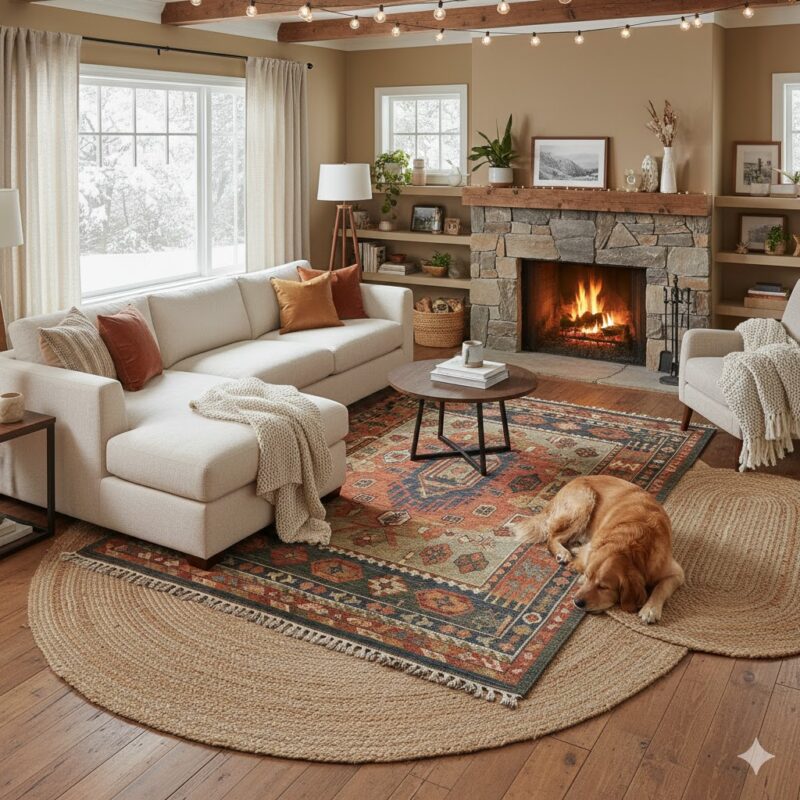
If you’ve got dull or dated flooring, rugs are your best friend.
Layer a large neutral rug (like jute or sisal) with a smaller patterned one on top — it instantly adds texture and warmth. The layering trick makes everything look styled and “designer-y,” even if the rugs were bargain finds.
You can also use rugs to define zones in open spaces or distract from floors you don’t love. And don’t underestimate thrift stores — vintage rugs with worn edges actually look high-end right now.
Basically, rugs are the secret sauce of cozy sophistication — especially when you mix textures.
5. Embrace Symmetry (It Just Looks Expensive)
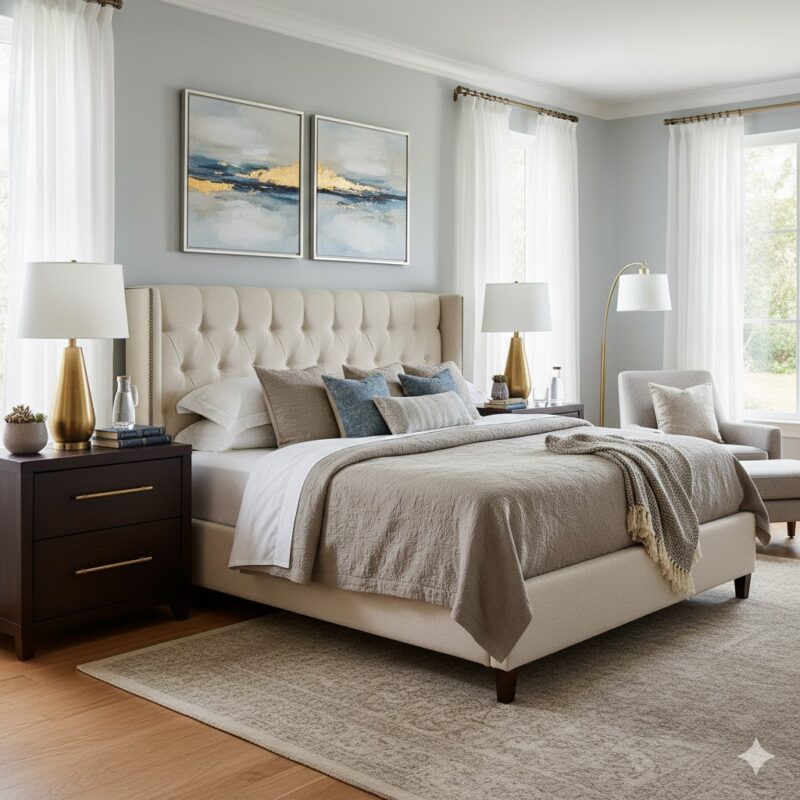
Symmetry has this quiet luxury about it. It’s simple, clean, and instantly organized-looking.
If your living room or bedroom feels off, try balancing it visually. Two matching lamps on each side of a sofa or bed. Paired frames on a wall. Even identical plants flanking an entryway.
You don’t have to buy “sets” either — just find similar shapes or tones and repeat them.
When things are balanced, it signals calm — and calm almost always reads as expensive. It’s weirdly psychological, but it works.
6. Mix High and Low Like a Pro
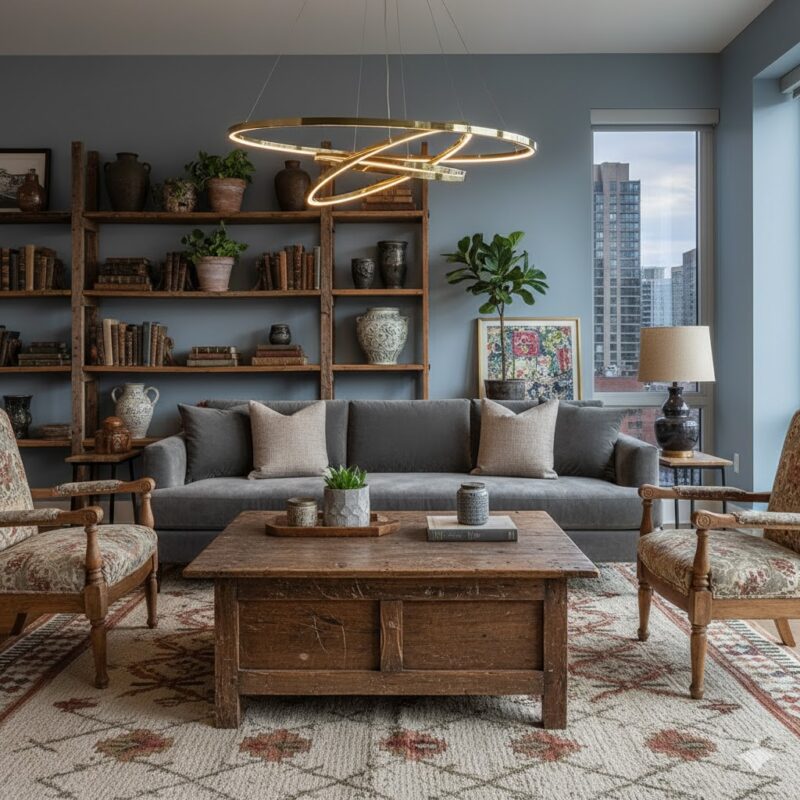
Here’s the thing — most beautifully designed homes are not filled with all high-end items. They’re a mix.
Pair that thrifted vintage coffee table with a new modern sofa. Add a designer-look lamp next to an old sideboard. It’s the contrast that makes it interesting — and believable.
The trick is to keep everything within the same general color palette or tone so it still looks cohesive.
I’ve seen $5 flea market finds look like luxury pieces just because they were surrounded by clean, modern elements. Balance is everything.
7. Hang Curtains High (and Wide)
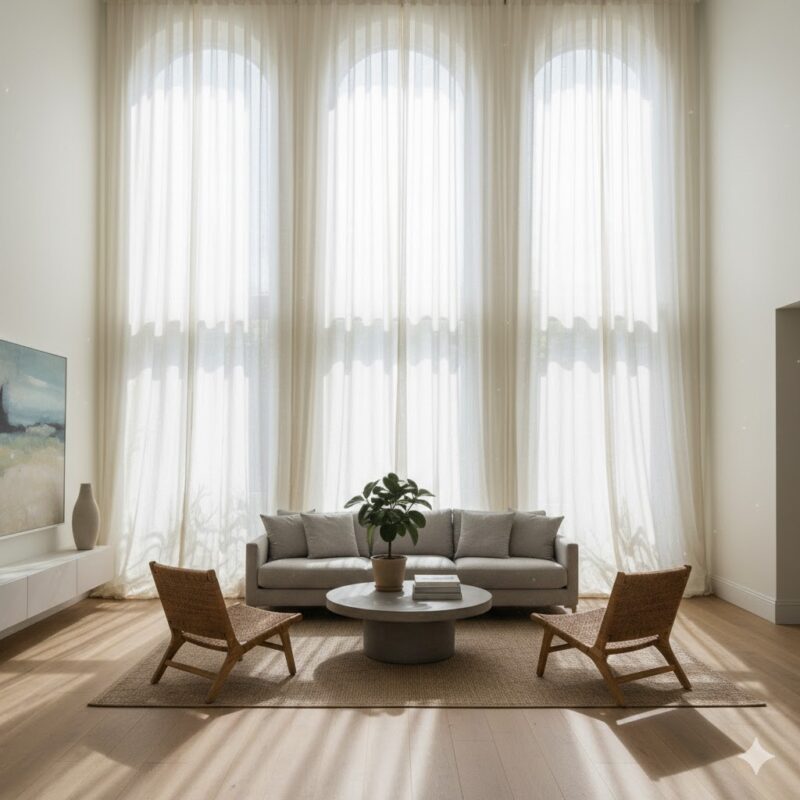
Cheap curtains hung low will instantly make your room feel smaller. The secret? Mount your curtain rods close to the ceiling and extend them past the window frame.
It gives the illusion of height and space — a visual “stretch” that designers swear by.
Even affordable curtains look elegant if they fit well. Go for long panels that puddle slightly at the floor — it feels luxurious and soft.
And choose fabrics like linen or cotton blends in solid neutrals. Avoid shiny polyester; matte always looks pricier.
Simple trick, massive difference.
8. DIY Art (Seriously, Try It)
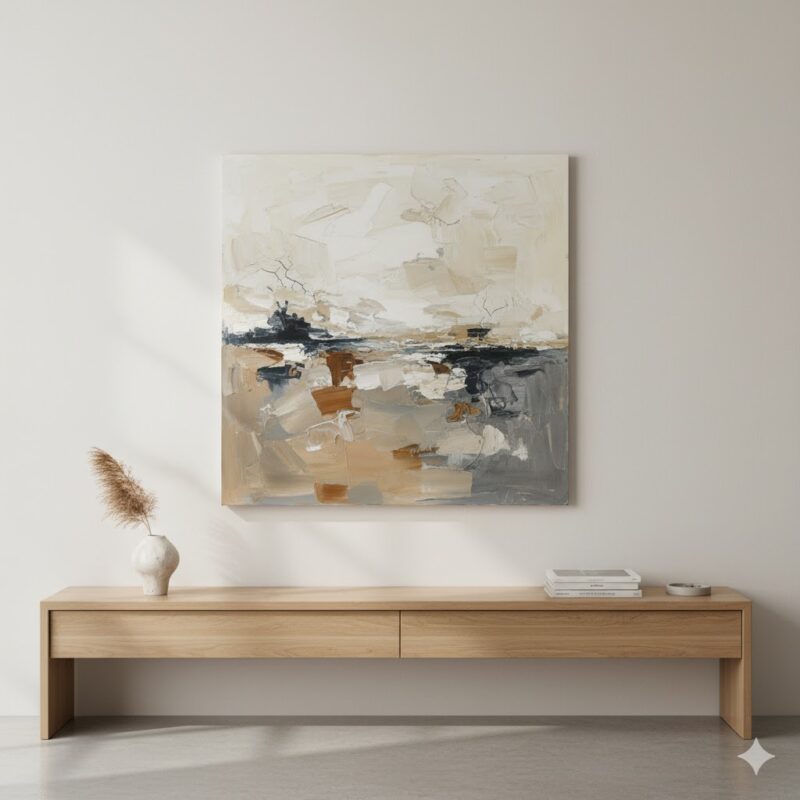
Big art = big impact. Unfortunately, it often comes with big price tags too… unless you make it yourself.
You don’t need to be an artist. Grab a blank canvas, a few tubes of neutral paint, and a putty knife. Smear, scrape, and layer until it looks interesting. Imperfection is what makes it look real, not mass-produced.
Or print black-and-white photography (even from free online archives) and pop them into thrifted frames. Instant chic.
Large-scale art gives that “gallery” feel that screams expensive — but nobody needs to know it cost you $12 and an afternoon.
9. Add Greenery (Instant Life, Instant Luxury)
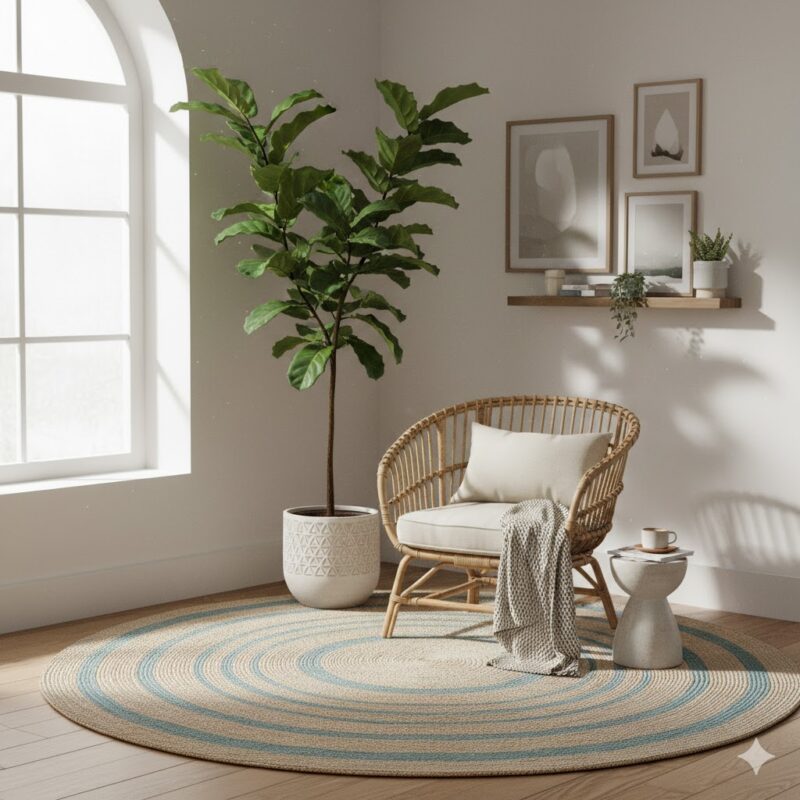
Every beautiful home — no matter the style — has plants. Period.
They bring color, height, and movement that fake decor can’t replicate. Even a single tall plant in the corner can make the space feel fresh and finished.
Snake plants, fiddle leaf figs, and olive trees (real or faux) always look elegant. If real ones are too much work, good faux versions are worth the splurge — they last forever and never look sad.
The goal is to make your space feel “alive,” not staged. Plants do that better than anything.
10. Curate, Don’t Crowd
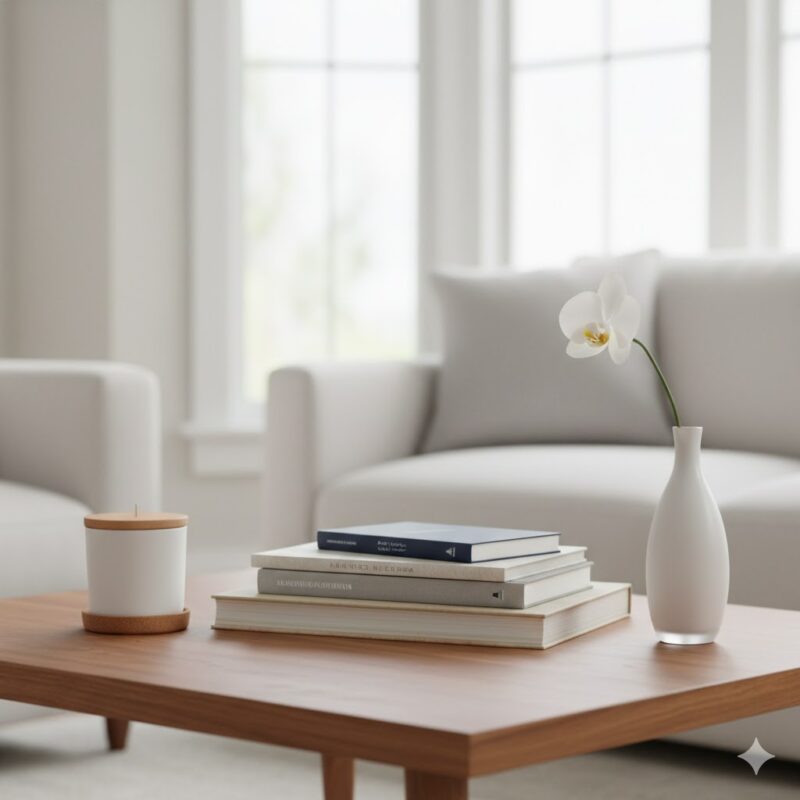
One of the easiest ways to make your space look expensive is to remove things.
Luxury spaces are rarely cluttered. Instead, they feel intentional — like every object was chosen carefully.
Try this: clear off a surface completely, then add back only three items that feel right together. Maybe a candle, a vase, and a small book stack. That’s it.
You’ll notice how open and balanced everything looks. Suddenly, your room feels “styled” instead of “decorated.”
Minimalism and luxury share the same language: simplicity, space, and quiet confidence.
When Cheap Doesn’t Feel Cheap
Here’s the secret designers don’t tell you — expensive-looking decor isn’t about the price tag. It’s about composition: balance, color, proportion, and lighting.
You can fill a room with costly furniture and it’ll still feel “off” if the scale’s wrong or there’s too much clutter. But if you mix textures, play with symmetry, and keep the palette consistent, even budget pieces can look stunning.
Don’t rush to redo everything at once. Focus on one corner, one small change at a time — a light, a paint color, a set of curtains. Each upgrade builds on the next.
And before you know it, you’ll walk into your space and think, “Wow… it feels different here.”
Not because you spent a fortune — but because you made it yours.
Before you go…. Your home decor is a significant financial investment—don’t let an accident, like spills or moving mishaps, ruin your aesthetic peace! Protecting those high-value decor items (especially custom pieces!) requires more than basic coverage; you need a solid home contents insurance policy or specific personal property riders. Finding the best homeowners insurance or renters insurance that covers your unique decor is key to keeping your space beautiful and your wallet safe.
For truly high-value or custom furnishings, specialist companies like Chubb offer comprehensive policies, though their average annual cost may be upward of $9,500 for high-value homes. For standard policies, the national homeowner average is around $2,100 per year, but this varies. Thankfully, renters insurance is much more affordable, often costing just $150 to $300 per year. The key is “scheduled personal property” coverage for your valuables; this can cost as little as $50 to $200 annually per $10,000 in value for art and antiques. National carriers like State Farm, GEICO, Allstate, and Progressive are great starting points for comparison.
Getting a quote is simple and super fast now, so you have no excuse not to check your coverage today.